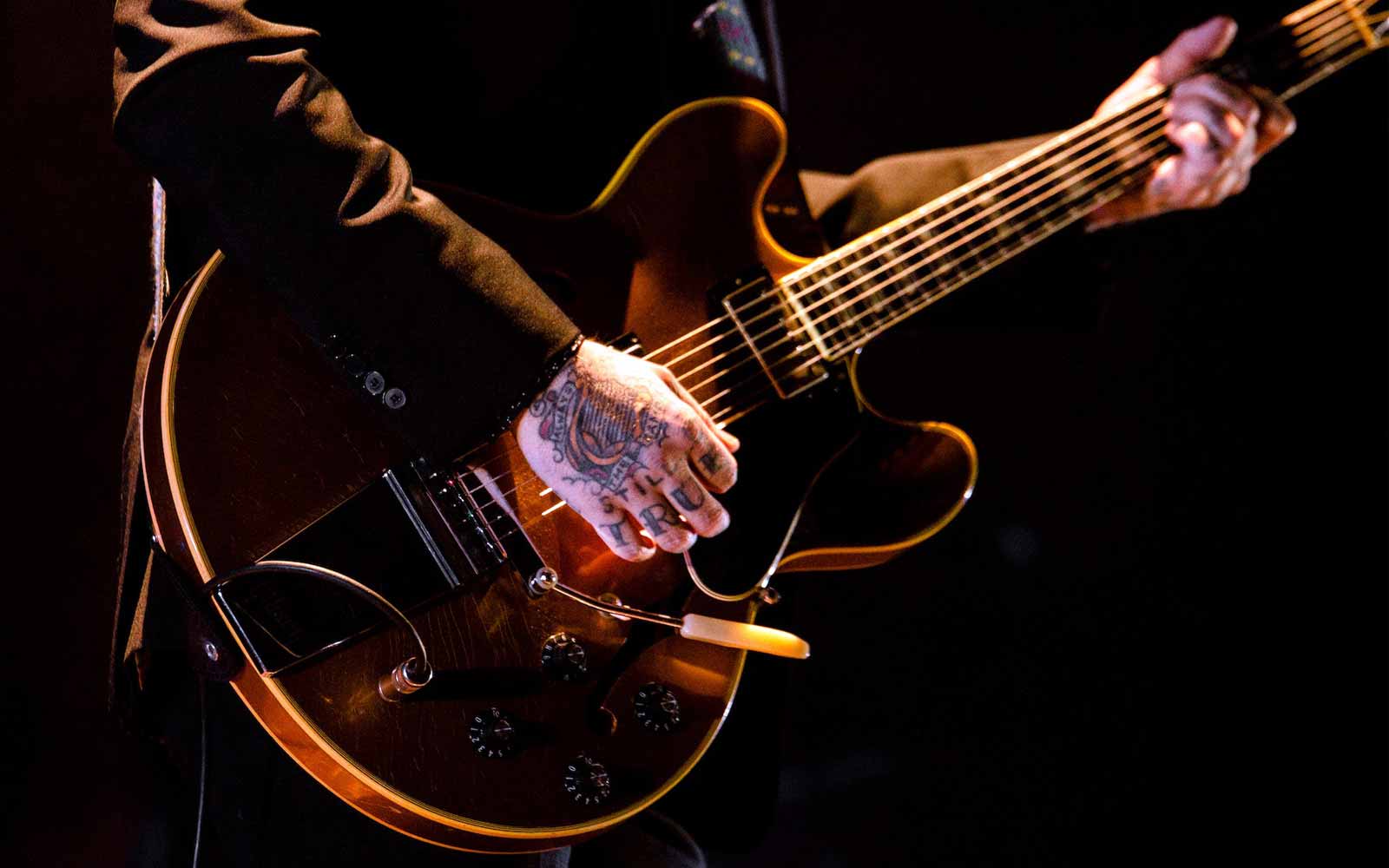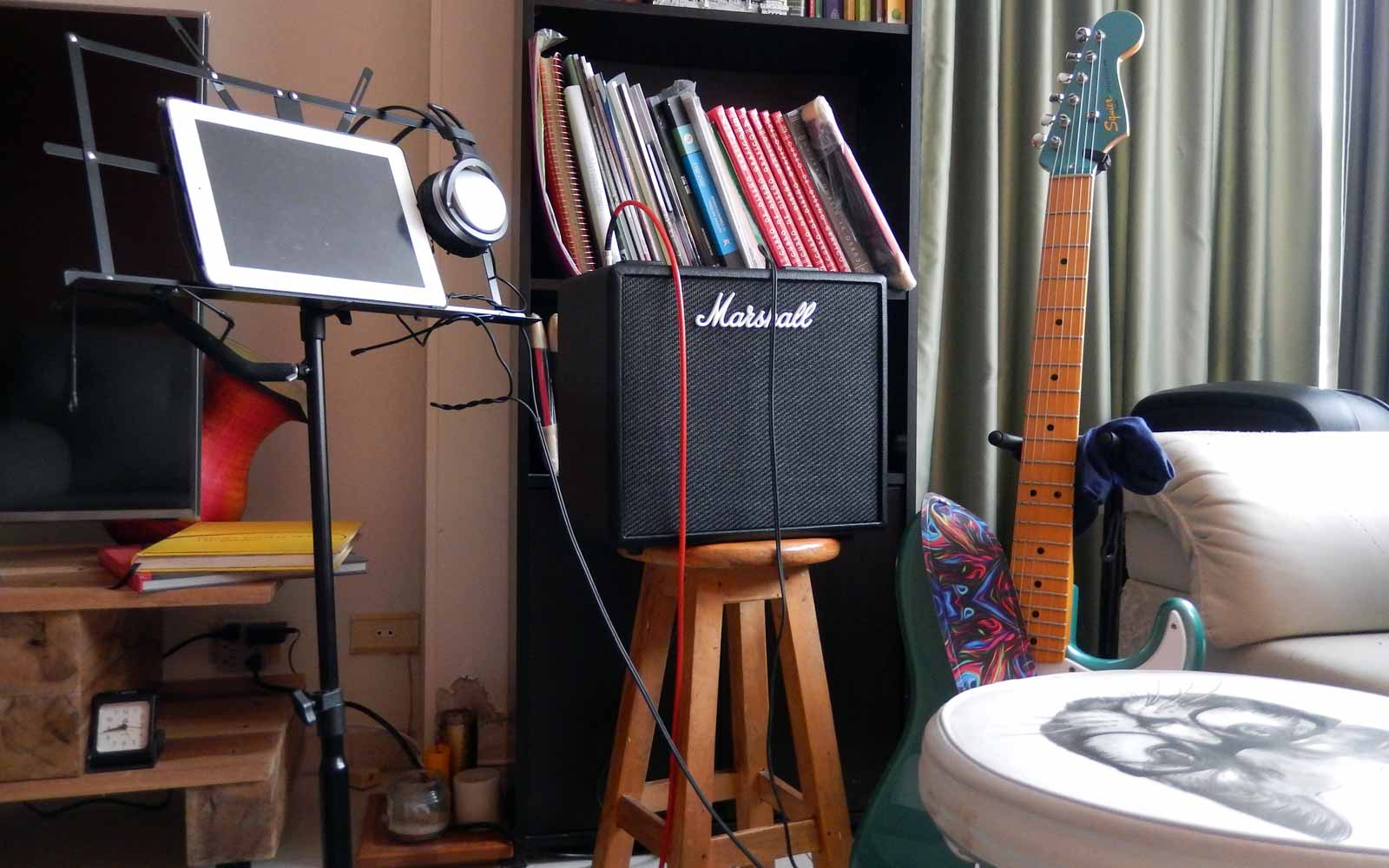EMG and Fluence cavities can look intimidating, but your Iron Age killswitch wiring is still simple and universal. This quick guide shows you the two-circuit rule, jack-first connections, and the correct LED resistor values so you can test, confirm, and install with confidence...
Essential Guitar Tips and Tricks For Quick Gains
Home
Codex | General
Essential Guitar Tips and Tricks For Quick Gains
June 15, 2024
Imagine the thrill of picking up your first guitar and feeling the power of music at your fingertips. A world of unlimited potential and creativity awaits, and all it takes is dedication, persistence, and the right guidance. In this blog post, we provide you with some guitar playing tips to help you quickly master the guitar by learning essential techniques, overcoming common challenges, and exploring different styles. Let’s dive in!
Key Takeaways
-
Develop your finger technique, left-hand positioning and right-hand picking for superior control.
-
Master chords & scales to unlock creative possibilities. Use metronomes & play along with songs to improve rhythm, timing and improvisation skills.
-
Explore guitar styles, practice consistently and utilize dedicated resources for maximum results!

Developing Proper Finger Technique
Proper finger technique forms the cornerstone of good guitar playing. Exceptional playing stems from perfecting the fundamentals from the outset, setting you apart from merely competent players.
To truly master the guitar, one must form good habits that preempt the development of bad ones. For novice guitarists, understanding the correct technique for both hands is a must, promoting accuracy, speed, and comfort during play.
Left Hand Positioning
Proper left-hand positioning greatly enhances fretting and mitigates common problems such as buzzing or muted strings. To achieve this, follow these guidelines:
-
Rest your thumb on the back of the guitar’s neck, promoting fingertip use for precision and preventing unintentional muting of nearby strings.
-
Maintain consistent finger placement on the fretboard.
-
Avoid a collapsed left wrist.
By following these tips, you can improve your left-hand technique and achieve better sound quality while playing the guitar.
One common mistake beginners make is attempting the “death grip” by hooking the thumb over the top of the fretboard for leverage. This can lead to strain and hinder your progress. Instead, press the strings more with the flat pad of your finger rather than the actual fingertip.
Legato is an excellent technique to test your fret hand’s capabilities, especially for beginners looking to improve their skills.
Right Hand Picking
Honing right-hand picking techniques is key to achieving superior control, dynamics, and versatility in your playing. Useful techniques encompass keeping the pick parallel to the strings, holding the pick efficiently, and independently practicing with the right hand to foster stability. To become versatile in right-hand guitar picking, practice fingerpicking, maintain a smooth flow, explore different musical styles, and consider playing with a floating hand position.
A smooth flow during play significantly enhances overall picking technique and contributes to becoming a more proficient player. Try playing three-note-per-string patterns, strumming patterns, or other exercises with your right hand moving continuously to achieve a smoother flow.
A floating hand position is an exciting way to add more versatility to your picking technique. It can be challenging to learn, but once mastered, you can use your middle and ring fingers more effectively.
Related: Best guitar picks for beginners to consider
Mastering Chords and Scales

Chords and scales act as the fundamental components of guitar playing. Their mastery lays a robust foundation and paves the way for the acquisition of more sophisticated skills. By learning open chords, barre chords, and scales, you’ll have the tools to play a wide range of styles and genres.
Start by learning the essential chords and scales on your beginner guitar, and then gradually progress to more advanced techniques and genres as you learn to play and learn how to play.
Open Chords
Open chords are the gateway to easy and versatile playing in various keys. They use open strings, allowing you to create beautiful, complex sounds with ease. Mastering open chords offers incredible benefits, such as:
-
Improved hand-eye coordination
-
Memorization skills
-
The ability to transpose
-
A strong foundation for advanced techniques
Practice open chords every day to develop finger dexterity and chord-changing abilities to perfection.
Barre Chords
A "bar chord" as it's sometimes called, poses a challenge for many guitarists, but tackling these basic chords can greatly enhance your flexibility and access to more complex chord progressions. To play barre chords, follow these steps:
-
Press your index finger firmly across all strings at a specific fret.
-
Use your other fingers to form the chord shape.
-
As you practice, move the chord shapes up and down the fretboard to play different chords and become more comfortable with this technique.
Scales
Scales are essential for improving finger dexterity, speed, and understanding of music theory. Practice guitar scales such as:
-
The Minor Pentatonic Scale (learn it here)
-
The Blues Scale
-
The Natural Minor Scale (or Aeolian Mode)
-
The Major Scale (learn it here)
By consistently practicing scales, you’ll develop the muscle memory needed for faster and more accurate playing. Try scale patterns at different speeds and challenge yourself with exercises like legato playing and chromatic scale exercises.
Rhythm and Timing

Rhythm and timing serve as the pulsating heart of music, and cultivating a strong sense of both is integral when learning guitar. To improve your rhythm and timing, use a metronome, play along with songs, and jam with other musicians.
Mastering rhythm and timing will allow you to stay in sync with other musicians, stay in time with the music, and improvise effectively.
Using a Metronome
A metronome is an invaluable tool for developing a strong sense of timing and internal rhythm. Use a metronome to practice playing in time with different tempos and rhythms, and to develop a great sense of groove and timing.
Begin with a slow BPM and gradually increase the speed as you become more comfortable playing in time. This will help you build the muscle memory needed for a steady tempo and consistent rhythm.
Playing Along with Songs

Playing songs or with backing tracks is a fantastic way to practice rhythm, timing, and chord changes in a real-world context, especially when you want to play with others. Choose songs with simple chord progressions and melodies to start, then gradually progress to more complex material as you become more comfortable.
Playing along with songs also helps you internalize musical phrases and patterns, ultimately enhancing your overall musicality and improvisation skills.
Jamming with Other Musicians
Jamming with other musicians can boost your rhythm and timing in numerous ways. It builds your sense of groove and timing by playing in harmony with other musicians, introduces you to different styles and rhythms, and encourages you to keep a steady tempo and stay in sync with the group.
Additionally, playing with other musicians offers opportunities for improvisation and interaction, pushing you to listen and respond to the rhythm and timing of other players.
Effective Practice Habits

Effective practice habits form the linchpin to guitar mastery. Through consistent practice, concentration on specific techniques, and a balance of theory and practical skills, you’ll experience steady progress and a comprehensive understanding of the instrument.
Keep in mind that regular practice is essential for building muscle memory and making intricate finger movements feel like second nature.
Consistency
Consistent practice is crucial for mastering the guitar and making steady progress. Here are some guidelines for how much time to dedicate to practice based on your skill level:
-
Beginners: Aim for at least 15 minutes per day to establish a regular practice routine.
-
Intermediate players: Try to practice for 60-90 minutes per day to continue building your skills and repertoire.
-
Serious guitarists: If you’re looking to pursue a career in music, you may need to practice around 4 hours a day to reach a professional level.
Remember, consistent, shorter practice periods are better than inconsistent, longer sessions.
Related: The samurai principles of "Dokkodo" applied to guitar
Focused Practice
Engage in focused practice sessions to refine specific techniques and overcome challenges. Deliberate practice is a specific type of focused training designed to help you take your performance to the next level. By breaking down complex skills into smaller components that are more manageable and easier to master, you can approach these challenges in a way that promotes success.
Balancing Theory and Practical Skills
Balance learning music theory with hands-on practice to develop a well-rounded understanding of the instrument. By taking the time to learn music theory, you can:
-
Boost your learning progress significantly
-
Sharpen your ear
-
Deepen your knowledge of notes, scales, chords, and rhythms
-
Train your brain to think like a musician
Understanding music theory can significantly improve your guitar playing.
Exploring Different Guitar Styles

Exploring different guitar styles as a beginner is a pivotal step on your musical journey. Not only does it keep your learning experience fresh and exciting, but it also equips you with a versatile set of skills.
Whether you're strumming acoustic folk tunes or diving into the intricacies of electric blues, each style introduces you to unique techniques and nuances, helping you develop a well-rounded foundation. This diversity fosters creativity, allowing you to find your own voice in the world of guitar, and who knows, you might stumble upon a style that resonates with your soul and ignites your passion.
So, don't limit yourself to just one genre; embrace the kaleidoscope of guitar styles, and you'll unlock a world of musical possibilities. Here's a few styles to consider:
-
Acoustic
-
Electric guitar
-
Fingerstyle
-
Rock
-
Blues
-
Jazz (Introduction To Playing Jazz)
As a guitar player, explore these styles to expand your repertoire and skills.
This will broaden your musical horizons and foster versatility. By exploring various styles, you’ll gain a broader understanding of the guitar as an instrument and unlock new techniques and sounds that will inspire your playing.
Acoustic vs Electric
Understanding the differences and similarities between acoustic and electric guitars is essential for choosing the right instrument for your goals. Acoustic guitars have a natural, warm, and resonant sound, whereas electric guitars can produce a wide range of tones and effects through amplification. Consider your musical preferences and goals when deciding which type of guitar to pursue.
Fingerstyle Guitar
Fingerstyle guitar techniques offer a unique and expressive playing style. By learning fingerstyle techniques, you’ll be able to:
-
Create beautiful melodies and harmonies that set your playing apart from others
-
Add depth and emotion to your playing
-
Explore various genres that utilize this technique for a versatile and dynamic repertoire
Practice fingerstyle techniques to enhance your guitar playing and unlock new possibilities for beginner guitar players, including those who are just starting out as a beginner guitarist or exploring the world of lead guitar. If you’re looking to learn guitar and play guitar, these techniques will be a great foundation for your journey to practice guitar.
Rock, Blues, and Jazz
Rock, blues, and jazz genres offer a wealth of techniques and styles to explore. Dive into these genres to broaden your repertoire, learn new techniques, and discover new sounds that will inspire your playing. From the electrifying riffs of rock legends like Jimi Hendrix to the soulful melodies of blues and the intricate improvisations of jazz, there’s a world of music waiting for you to explore and conquer.
Overcoming Common Challenges

While guitar playing does present a fair share of challenges, surmounting them can be immensely gratifying. By tackling common challenges such as chord transitions, playing cleanly, and increasing speed and accuracy, you’ll develop a strong foundation that will enable you to play complex progressions and techniques with ease.
Chord Transitions
Smooth chord transitions are essential for improving your overall playing and making complex progressions easier to play. To practice smooth chord transitions, follow these steps:
-
Start slow and gradually increase your speed.
-
Focus on pressing your fingers firmly against the strings.
-
Make sure all of the strings are ringing out clearly.
By following these steps, you’ll be able to improve your chord transitions and play more smoothly.
By mastering smooth chord transitions, you’ll be able to play your favorite songs with ease and confidence.
Playing Cleanly
Playing cleanly is crucial for producing clear, articulate notes and chords. Focus on proper finger placement to ensure accurate and precise fretting of the notes. This will help you avoid buzzing or muted strings and will allow for clear and distinct sound production.
Additionally, proper finger placement will help you maintain proper hand and wrist position, which will improve your overall technique and reduce any strain or discomfort while playing.
Speed and Accuracy
Develop speed and accuracy through challenging techniques like alternate picking, sweep picking, and finger tapping. These techniques can help you articulate notes seamlessly, navigate complex passages with ease, and play at a faster tempo. By mastering speed and accuracy, you’ll be able to play intricate melodies and solos that will captivate your audience and showcase your skills as a guitarist.
The Importance of Ear Training & Aural Skills

Ear training and aural skills constitute a pivotal aspect of nurturing a well-rounded musician. Enhancement of ear training skills through note and chord recognition, song transcription, and improvisation fosters a more profound musical understanding and unlocks your full potential as a guitarist.
Recognizing Notes and Chords
Training your ear to recognize notes and chords is essential for improving your overall musicianship. By developing this skill, you’ll be able to identify the key of a song, learn new material more quickly, and gain a deeper understanding of the music you’re playing.
Start by practicing with simple chord progression and melodies, and gradually progress to more complex material as your ear training skills improve.
Transcribing Songs
Practicing transcribing songs by ear is an excellent way to develop your listening skills and understanding of music theory. By learning to identify the chords, melody, and rhythm of a song without sheet music, you’ll be able to gain valuable insight into the songwriting process and become a more versatile musician.
Start with simple songs and gradually progress to more complex material as your transcription skills improve.
Improvisation
Experimenting with improvisation is a fantastic way to boost your creativity and apply your knowledge of scales and chords in a musical context. Improvisation allows you to explore new ideas, create unique melodies, and develop your own musical voice.
By practicing improvisation regularly, you’ll gain a deeper understanding of how music works and unlock your full potential as a guitarist.
Utilizing Guitar Resources

Leveraging a plethora of guitar resources like online lessons, guitar apps, and instructional books or DVDs can significantly enrich your learning and practice. Such resources offer a wealth of guidance from seasoned guitarists and an abundance of material for practice and learning.
So, let’s explore some of these resources and discover how they can help you on your guitar journey.
Related: How to teach yourself guitar
Online Lessons and Tutorials
Online lessons and tutorials are an excellent resource for learning new techniques, songs, and styles from experienced guitarists. Websites like Stay Tuned Guitar, Fender Play, TrueFire, and Guitar Tricks offer step-by-step lessons led by world-class instructors, providing you with the guidance and support you need to expand your skillset and master the guitar.
By incorporating online lessons into your practice routine, you’ll have access to a wealth of knowledge and expertise to help you reach your goals.
Guitar Apps
Guitar apps can be a valuable tool for aiding your practice, ear training, and learning new material. Some popular guitar apps include:
-
Yousician: Offers lessons, exercises, and a vast library of songs to practice and master. It also includes a built-in tuner and metronome.
-
Fender Play: Provides step-by-step lessons and a variety of songs to learn. It also offers a tuner and metronome.
-
Ultimate Guitar Chords: Offers a comprehensive library of chords and tabs for practicing and learning songs. It also includes a tuner and metronome.
These apps can help you improve your guitar skills and make the most of your practice sessions.
Books and DVDs
For in-depth instruction and guidance on specific aspects of guitar playing, consider consulting books and DVDs. Titles like “Guitar Aerobics,” “A Modern Method for Guitar,” and “Fretboard Logic SE” offer valuable insights and techniques to help you develop your skills and understanding of the instrument. By incorporating books and DVDs into your practice routine, you’ll have access to a wealth of knowledge and expertise to help you reach your goals.
Summary
In conclusion, mastering the guitar is an exciting journey that requires dedication, persistence, and the right guidance. By focusing on proper techniques, mastering chords and scales, improving rhythm and timing, establishing effective practice habits, exploring different styles, overcoming common challenges, and utilizing various resources, you’ll unlock your full potential as a guitarist. So, pick up your guitar, embrace the learning process, and let the music guide you on your path to greatness.
Frequently Asked Questions
How can I improve my guitar playing?
Improve your guitar playing by setting specific goals, practicing regularly, using a metronome, seeking quality instruction, breaking down and play slowly, experimenting with different techniques, getting feedback from others and yourself, and visualizing success.
What not to do when playing guitar?
When you're starting out on your guitar journey, there are a few things you should definitely avoid. Firstly, don't neglect proper hand positioning and posture – bad habits can be tough to break later on.
Secondly, resist the urge to skip over the fundamentals; mastering basics like chord changes and finger dexterity is essential for long-term progress.
Additionally, don't ignore maintenance; keeping your guitar clean and well-tuned ensures it'll sound its best.
Lastly, don't get discouraged by challenges; remember that every guitarist, including the legends, once faced the same obstacles. Instead, embrace the learning process, stay patient, and you'll soon find yourself strumming your way to success.
How long should I practice guitar each day?
The ideal practice duration for you as a beginner should be around 20-30 minutes daily. This time frame strikes a balance between consistency and avoiding burnout. It allows you to build muscle memory and develop your skills gradually.
However, quality matters more than quantity, so focus on productive and focused practice during this time. As you progress and your fingers get more nimble, you can gradually increase your practice time. The key is to stay motivated and make it a habit, as regular practice is the secret to mastering the guitar.
What are some effective techniques for improving chord transitions?
To improve chord transitions, start off slow and gradually increase your speed while focusing on pressing your fingers firmly against the strings and ensuring each string is ringing out clearly.
How can I develop my ear training skills?
To enhance your ear training skills as a beginner, start by listening to a wide range of music and trying to identify different elements like chords, melodies, and rhythms.
It's also helpful to use apps or online tools designed for ear training exercises, which can gradually sharpen your ability to recognize pitch, intervals, and harmonies.
Additionally, consider practicing with your guitar – try to play simple songs by ear, without relying on tabs or sheet music. This hands-on approach will strengthen your musical intuition.
Lastly, jamming with other musicians can be incredibly beneficial, as it forces you to adapt and tune your ear to different playing styles. Over time, your ear will become more attuned to the nuances of music, making you a more versatile and confident guitarist.
Also in Codex | General

Iron Age vs Stone Age Guitar Picks: Timeline + How to Tell Them Apart
December 19, 2025
A late-night SEO audit pulled up Stone Age Guitar Picks alongside Iron Age—and the search layer started doing what it always does: bundling names & making associations. Here’s the public timeline, why “Age”-framed brands get grouped in a niche this small, and how to verify you’re actually buying Iron Age.

Relentless: Myth & Meaning of the Legio Ferrata Collection
December 05, 2025
For players obsessed with performance optimization—speed, accuracy, endurance—with no patience for wasted motion. UHMWPE & a 3mm platform keep the attack slick and stable...

Why Do Guitar Killswitches Pop & What You Can Do
November 29, 2025
Electric guitar players using a kill switch can encounter an annoying popping sound while engaging it, which is especially disruptive on a clean channel or in quiet settings. While high-gain settings can mask this pop due to compression, those preferring a clean tone may need to take a look...

Triumphant: Myth & Meaning of the Imperial Collection
November 20, 2025
Polished acrylic. Blue pearlescent depth. The Imperial Collection draws on ancient symbols—authority, discipline, restraint—to favor tone and control over brute strength. See the six roles inside...

Spec Changelog: July–December 2025
November 15, 2025
This is a running log of buyer-visible spec changes for Iron Age gear from July–December 2025. Picks, knobs, killswitches, and policies are listed by date with a short note on what changed, why, and what you might notice in use...
+Start Here
The Sword & Laurel — what our mark demands of the maker, and the musician.
The Oath — how we make, what’s in-house vs partnered, and what we stand behind.
+Featured
Be first to know when new picks drop. Blog updates & shop news, no noise.15% off for new subscribers.
+Choose Your Artifact
Gladiator · Imperial · Legio Ferrata · Parthenon · Ragnarok · Limited Edition · All Picks
+Affiliate Notice
As an Amazon Associate, Iron Age earns from qualifying purchases.
"Quality is never an accident.
Only High Intention. Sincere Effort. Skillful Execution.
Built on purpose, held on purpose."
— The Iron Age Standard
- Contact
- The Oath
- Sword & Laurel
- About
- Shipping Info
- Returns & Warranty
- Account
- Rewards
- Endorsement
- Wholesale
- Privacy
- Terms
Sign up for the Iron Age newsletter to Save 15% on your 1st order, plus get exclusive offers, product updates, and early access to giveaways!
© 2025 Iron Age Guitar Accessories.
Est 2015.


